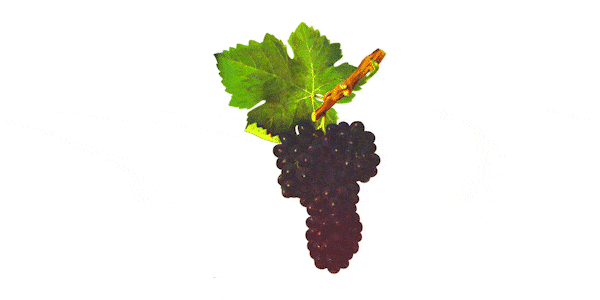We just have to come out and say it: Syrah is the greatest red grape on the planet. There’s probably not a wine that it doesn’t make better, and we’re not just talking about Rhône red blends like Châteauneuf-du-Pape. After all, there’s a reason that Bordeaux chateau historically added a dollop of Hermitage to bolster their wines. But forget the blends. What really excites us is when Syrah is the star.
Where Syrah is grown
Syrah’s ancestral home is the Northern Rhône, where the benchmark examples grow on the impossibly steep hillsides of Hermitage and Côte-Rôtie. Vines are individually staked and painstakingly hand-farmed. It’s like walking back into Roman times. And the wines are just as prized now as they were back then – though, perhaps, a dollar or two more expensive.
More affordable entry-points to the Northern Rhône are St. Joseph and Crozes-Hermitage. These are larger appellations, with more variability between sites and producers. But the best wines can be exceptionally pure expressions of Syrah. Just look at the coveted wines of Alain Graillot.
Cornas falls somewhere in the middle. It’s a smaller hillside than Hermitage, and yet historically the wines were not highly prized because, well, they simply weren’t up to snuff. It took the likes of August Clape and Jean-Luc Colombo to right the ship.
Where Shiraz is grown
The first cuttings of Syrah made their way to Australia at the beginning of the 19th century. The wines began to be labelled with a less common name: Shiraz. Today, Australian Shiraz is a brand in itself.
The benchmark examples, unquestionably, come from the Barossa Valley. An hour northeast of Adelaide, this warm, continental climate is home to extraordinarily old vines thanks to a long, uninterrupted history of winegrowing. On the other side of the Barossa Range mountains is Eden Valley. Higher-elevation vineyards give this region more of a cool-climate character, epitomized by Henschke’s Hill of Grace.
But you can find world-class Shiraz across the country. Minutes from the southern suburbs of Adelaide is McLaren Vale, home to d’Arenberg and Hardys. And then there are the cooler climates of Victoria, such as Heathcote and Pyrenees, where Chapoutier is making outstanding wines under the Tournon label.
Outside of Australia, other top regions include British Columbia’s Okanagan Valley, New Zealand’s Hawke’s Bay, Paso Robles in California, Stellenbosch and Swartland in South Africa, and Walla Walla Valley (including The Rocks District) in Washington state.
What Syrah tastes like
Whether a wine is labelled as Syrah or Shiraz is at the discretion of the producer. But typically, the name gives a clue about the style of the wine. Syrah is often used for more restrained, structured, Rhône-inspired wines. Take Hermitage and Côte-Rôtie. The wines typically show ripe dark berry fruit, but the fruit is only a small part of the story. These wines are packed with savoury notes of green olive, pepper, smoked meats, and game. Plus, they can have the most incredible floral aromatics, heightened by a splash of Marsanne and/or Roussanne in Hermitage or Viognier in Côte-Rôtie.
In St. Joseph and Crozes-Hermitage, the ripeness is dialled down a few notches. These wines don’t have the same power and density, but the best examples have an ethereal freshness and elegance, with pure red berry fruits, spice, and violets. A small amount of Marsanne and Roussanne is permitted in both regions.
And then there’s Cornas. The wines are more muscular, sometimes verging on rustic, with brooding dark fruits, leather, earth, and olive. It’s the outlier in the Rhône, lacking the floral perfume of other regions, in part because the wines must be 100 percent Syrah by law.
What Shiraz tastes like
Shiraz is less about restraint, and more about bold, saturated fruit and soft tannins. Take Barossa Shiraz. These can be full-throttle wines that are rich, full-bodied, and densely concentrated with jammy dark fruits. They still manage to retain some of the Rhône’s savouriness, though, with olive, white pepper, and mint. These wines can soak up a lot of wood, too, and you’ll find producers using both French and American oak.
You can’t paint Australian Shiraz with one broad brush, however. McLaren Vale is more about lush dark fruit and chocolatey oak, while Heathcote and Pyrenees often have more spice and gamey notes.
And it’s not all black and white. Some regions manage to balance the two styles, such as Hawke’s Bay, the Okanagan Valley, Swartland, and Walla Walla Valley. These wines often show the best of both worlds, with ripe, intense fruit that’s balanced by floral and savoury notes, making these wines incredibly complex.
What to pair with Syrah/Shiraz
Syrah pairs beautifully with the gamey flavours of lamb, especially cooler climates examples from the Northern Rhône or Hawke’s Bay. With robust, bold Shirazes, go for a meaty steak like striploin.
How to pronounce Syrah
“Sih-rah”
How to pronounce Shiraz
“Shuh-razz”
What to buy
Qupé Central Coast Syrah 2018 ($17)
Central Coast, California
Torbreck Woodcutter’s Shiraz 2019 ($23)
Barossa Valley, South Australia, Australia
d’Arenberg The Laughing Magpie Shiraz Viognier 2016 ($30)
McLaren Vale, South Australia, Australia
Guigal Crozes Hermitage 2018 ($30)
Crozes-Hermitage, Rhône Valley
Le Vieux Pin Cuvée Violette 2019 ($33)
Okanagan Valley, British Columbia
Jean-Louis Chave Selection Saint-Joseph Offerus 2017 ($35)
St. Joseph, Rhône Valley
Spring Valley Nina Lee Syrah 2013 ($50)
Walla Walla Valley, Columbia Valley, Washington
Rene Rostaing Cote-Rotie Ampodium 2018 ($90)
Côte-Rôtie, Rhône Valley
Penfolds RWT Shiraz 2017 ($150)
Barossa Valley, South Australia, Australia
Guigal La Turque Cote Rotie 2006 ($380)
Côte-Rôtie, Rhône Valley






